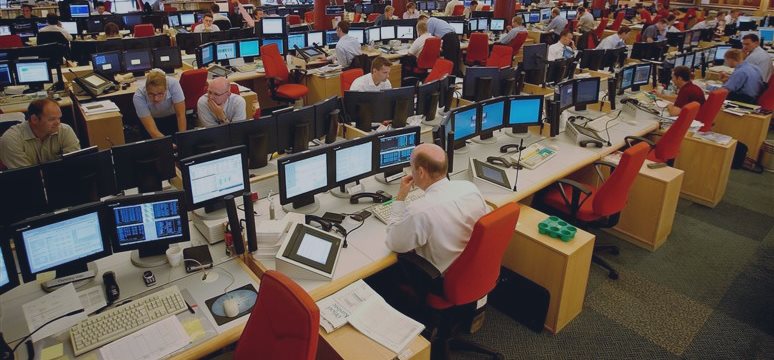
- Trend: 2 successively higher tops and bottoms (uptrend) / 2 successively lower tops and bottoms (downtrend)
- Other names for a positive trend: run up/bull run/rally
- Other names for a negative trend: run down/bear run/decline
- Trading range: the market moves up and down within a consistent range without establishing a definitive trend in one direction
- Consolidation: the range of price's movement constricts as the market becomes directionless
- Reversal: the market moves in the opposite direction from the previous trend, implying the end of that trend
- Retrace: the market moves some amount in the opposite direction from the previous trend before the trend is eventually reinstated
- 2 Attempts Rule: the idea that if the market attempts to do something twice and fails, the opposite will happen
Support and Resistance
In a trading range, or even within a trend, price action frequently
seems influenced by or adherent to levels that have previously been
significant turning points in its history; on the price action trader's
charts, these levels are marked as lines offering potential support and
resistance to future price action; lines drawn above the current price
constitute resistance, while lines drawn below it are support. If either
of these levels are broken, the function of the line is reversed, so,
for example, if price breaks through a resistance line, that line can
now be understood as a support line to future price action.
Support and resistance lines are typically horizontal, but when they are diagonal along a trend they are known as trend lines.
As an example (see video), I marked some significant support and
resistance levels on this chart of the euro US dollar pair. This lowest
level at about 1.34 is established as the point where the initial trend
in mid September is arrested and turns briefly bearish. After the first
bullish bear tops out at this level, the two bearish bars thereafter max
out as though they are experiencing resistance from the same level
before a break-through on September 16th. At this point, the resistance
becomes support, and we can see that two months later, in mid November,
this support level is tested and holds, as price rises back up for the
rest of the month. If you recall the two-attempt rule that I explained,
we can see that in action with this highest resistance level at about
1.383. We would draw this line in because it represents the height of
the bullish trend extending from the beginning of this chart to late
October. We can see that price returns close to this level in the next
trend peak in mid December, and then finally tests it with the wick of
this candle at the end of the month. Since the level is reached, but
price fails to definitively break through, we can expect a reversal
based on the two-attempt rule, and that's exactly what we've seen since
the end of December.
So, the basic idea behind using support and resistance effectively in a
trading range is to buy at the support level and sell at resistance in
an uptrend, or to sell at resistance and buy at support in a downtrend;
so, we're not necessarily hoping for a break-out through the established
levels, because a break-out means that the market isn't behaving
predictably enough to allow for safe bets on its future performance.
Instead, the most conservative or reliable trades are those that occur
as the market fluctuates between identifiable support and resistance
levels, allowing you, in an uptrend, to buy when a retracement of
bearish leg has brought prices down to a support level, and then sell
when price returns to the resistance level, or, in a downtrend, to sell
when price is maxed out at a reliable resistance level. The reason we
are looking to buy in an uptrend and sell in a downtrend is that price
action trading is all about playing the odds, so trading with the trend
rather than against it is usually a better idea since a trend is
statistically more likely to continue than to reverse
So, before we move on to some basic set-ups and stop placement, here are
a few more important terms now that we have a sense of support and
resistance.


